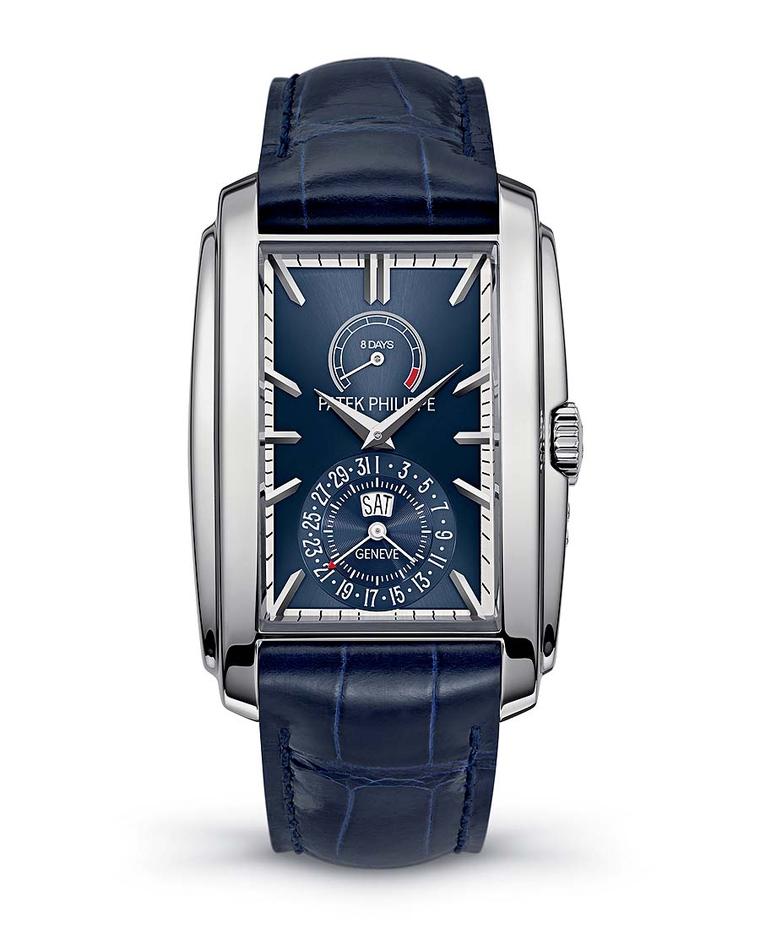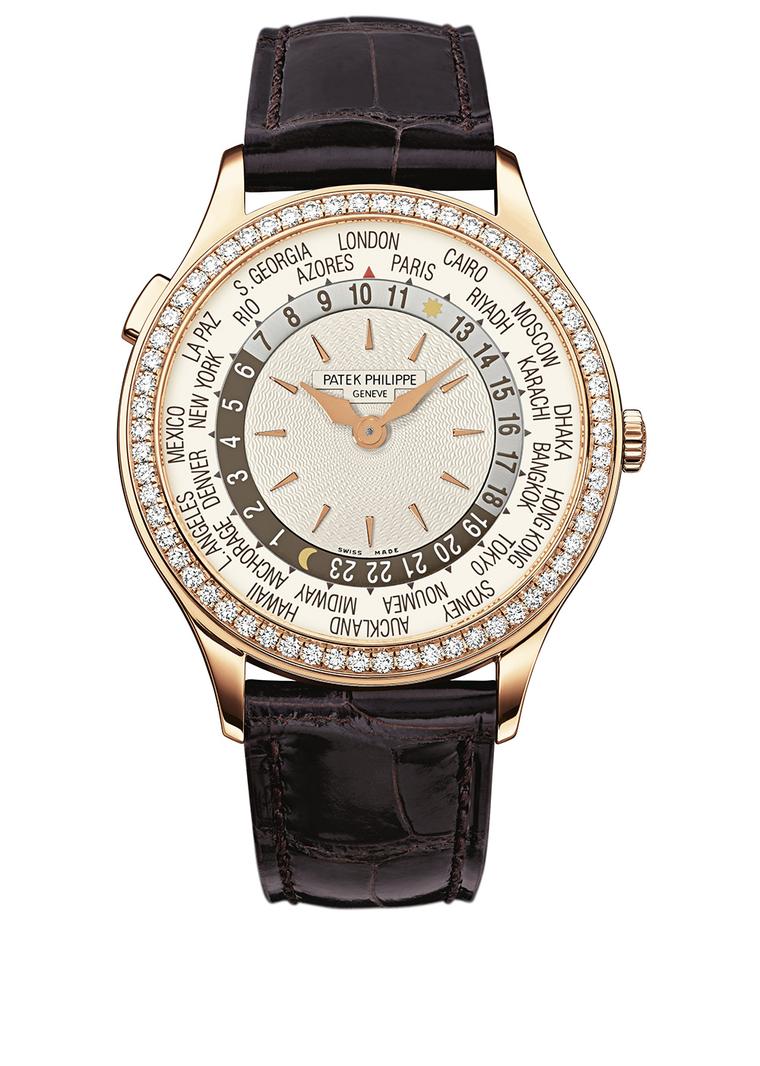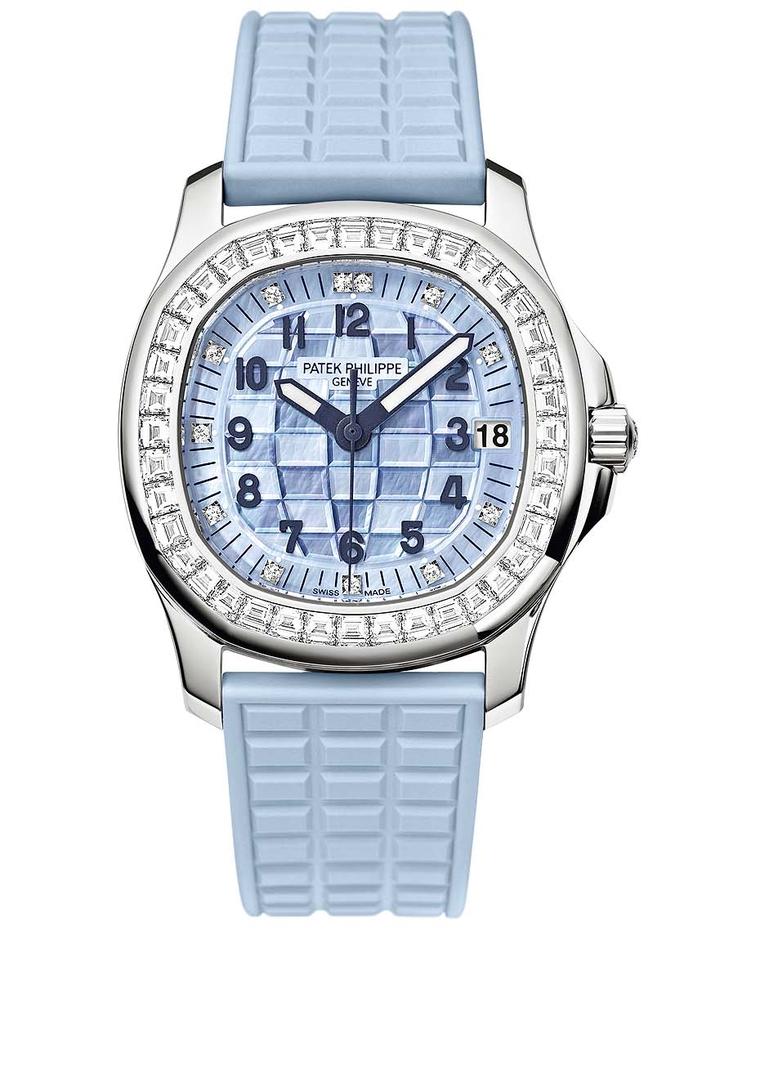
When I first looked at the pleasingly round gold case of the Patek Philippe Diamond Ribbon Ref. 4968, shimmering with diamonds and a milky mother-of-pearl dial, I cooed. The ultimate, if not most eloquent, accolade for a watch.
Reason must be applied to understand this irrational behaviour and, determined to do better than cooing, I was inspired to find out exactly how Patek Philippe creates watches so refined, so divine and so perfect that I am quite literally lost for words. I would then know just why looking at those plump, swirling gold numerals on the dial makes my pupils dilate and why I long to repeatedly run my fingers along the spiral of diamonds set into the pebble-smooth gold case.
So I travelled to see Patek Philippe in Geneva and walked through the door of the majestic, glass-clad headquarters, armed with a notebook and pen, determined to find a rational explanation for the appeal of this watch. Wearing a white lab coat and blue bags over my shoes, I entered the dust-free workshops to see for myself the production process of the new Diamond Ribbon Ref. 4968.
After kilometres of walking through workshops, I can report that, as a die in the shape of the top half of the watch case silently and slowly bore down on a slab of rose gold, I solemnly witnessed the first step in the creation of the Diamond Ribbon. I peered at computer-controlled robotic machines making appealing whizzing and gurgling sounds as multiple drill-heads pecked and milled and refined the gold case, cooled by sprays of golden fluid.
I dutifully noted the dozens of stages, from stamping to quality controls, from drilling to de-burring and then more quality controls. Lots of diamond polishing, more quality controls, a bit more buffing, a session of chamfering, painstaking hand-polishing as well as some boxwood and pearwood polishing all rounded off by a turn of suede buffing - and this was just the case. I systematically took notes on the hundreds of processes involved in making and assembling the 173 components of the new hand-wound Calibre 215 PS LU movement that powers the Diamond Ribbon. In pursuit of the truth, I poked my finger against the scalpel-sharp slivers of diamond used for mirror polishing.
I watched the gaps between the cogs of a wheel the size of your average breadcrumb being polished to a high sheen, and checked and repolished and then rechecked, for good measure. I winced as a severe-looking controller in high heels marched an innocent, microscopic component into an ominous black-curtained booth and amplified it 100 times to better scrutinise its very soul.
I tiptoed past women with loupes wired to their heads holding components the size of a baby's eyelash, which they were delicately decorating. I inhaled lavender-oil-scented air in the polishing department and studied chunks of boxwood awaiting preparation to become polishing heads. I watched solid gold numerals, from 1 to 9, being cut out of gold - their slender gold feet slipped perfectly into the barely visible holes drilled into the mother-of-pearl dial.
In the gem-setting department I felt dizzy as I peered through binocular microscopes to admire the work of the gemsetters. I questioned the head gemmologist on his secrets to achieving the bright sparkling ribbon effect around the case. Tweezers in hand, the gem specialist showed me how he carefully inspects each and every one of the 273 top-clarity diamonds that grace the case.
So after hours of inspecting the nitty-gritty of production, talking to controllers with clip-charts, hearing the clattering of machinery and the buzz of polishing, smelling the aromas of CNC machines and watching rods of gold become precision components, what have I to say about the Diamond Ribbon? With a sigh I have to admit I love the watch more than ever. Hardly a scientific conclusion, but proof that my first instinct was spot on. This watch is perfect in every possible way: inside out, upside down, sideways, microscopically, gemmologically, aesthetically and, of course, mechanically.
As I left the Patek Philippe building in Geneva, I passed under a gleaming aluminium ribbon-like sculpture, three stories high, which soared into the air and then looped back on itself forming a perfect arc, like an oversized Scalectrix. This serenely confident sculpture was a fitting analogy for what I had just seen: an elegantly simple idea that sits so lightly on the wrist made reality through hard work and the pursuit of perfection.

















